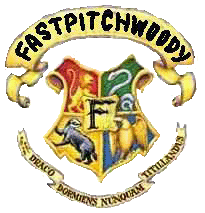|
Other Topics:
What is Motivation?
 The Centrality of Motivation
The Centrality of Motivation
 Motivational States vs.
Motivational States vs.
Motivational Traits
 Motivation vs. Volition
Motivation vs. Volition
 Intrinsic vs. Extrinsic Motivation
Intrinsic vs. Extrinsic Motivation
 Other Motivational Constructs
Other Motivational Constructs
Nature
of Human Motivation
 Basic Motivation Concepts
Basic Motivation Concepts
 Types of Needs
Types of Needs
 Achievement Motivation
Achievement Motivation
 Frustration and conflict
Frustration and conflict
Early
Theories of Motivation
 Hierarchy of Needs
Hierarchy of Needs
 Theory of X and Y
Theory of X and Y
Contemporary
Theories of Motivation
 ERG Theory
ERG Theory
 McClelland's Theory of Needs
McClelland's Theory of Needs
 Cognitive Evaluation Theory
Cognitive Evaluation Theory
 Goal-Setting Theory
Goal-Setting Theory
 Reinforcement Theory
Reinforcement Theory
 Equity Theory
Equity Theory
 Expectancy Theory
Expectancy Theory
Other
Theories of Motivation
 Attribution Theory
Attribution Theory
 Expectancy-Value Theory
Expectancy-Value Theory
 Flow Theory
Flow Theory
 Two Factor Theory
Two Factor Theory
 Job Design Theory
Job Design Theory
Motivational
Tests |
The
venerable concept of drive (e.g., Bindra, 1968; Hull, 1952) remains an
important component of the motivational picture as an aroused internal
state that both invigorates mental and motor activity and modulates
the value of drive-related incentives. However, even Hullís (1952)
theory supplemented it with incentive as a determinant of motivation,
and subsequent evidence (e.g., Bindra, 1968; Black, 1965, 1968, 1969,
1976; Black & Cox, 1973; Klinger, 1971; Tomkins, 1962) supported
the need for additional factors, or even just different factors, for
motivational prediction of everyday human behavior. Following
Bindraís analysis, drive may be considered to perform two functions:
to activate and to modify, even if only temporarily, the values of
various incentives. Thus, both rats and people, when hungry, become
more restless and give heightened priority to getting something to
eat.
The
concept of need (e.g., Heckhausen, 1991; McClelland et al., 1953;
Murray, 1938) is similarly alive and well. It has evolved into a construct
that summarizes the value that an individual typically places on a certain
class of incentives (i.e., potential goals). For example, an individual who
places relatively high intrinsic value on achievement incentives, such as
winning races or intellectual contests or doing well in oneís work, is said
to have a high need for achievement. Thus, like drive, need in this sense
plays a role largely in relation to incentive value, which is a crucial
component in decision-making regarding which goals to pursue .
|


